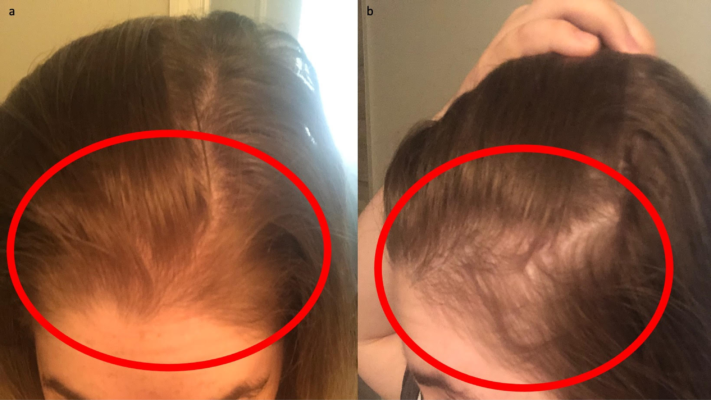Telogen Effluvium
Telogen effluvium, popularized term for a common cause of temporary hair loss. It is caused due to excessive shedding of resting or telogen hair after a shock. However, new hair continues to grow. Telogen hair is also known as Club hair. It is because of the shape of its root.
It is different from the Anagen effluvium. In this the hair shedding is due to the interruption of active or anagen hair growth by some kinds of drugs, toxins or inflammation (one such example of anagen effluvium is alopecia areata). The Anagen hair has pointed or tapered tips.

The acute telogen effluvium is not restricted to any age group. It can affect people of all age groups irrespective of their gender. Whereas, the chronic telogen effluvium shows no clear precipitating. This unknown precipitating cause tends to present in otherwise healthy women 30 to 60 years of age.
What are the causes of Telogen Effluvium?
When it comes to a normal healthy person, on his scalp about 85% of the hair follicles are actively growing hair (also termed as anagen hair) and the rest is 15% of the resting hair, the telogen hair. Among which a few can also be Catagen. The hair follicle usually grows anagen hair for the first 4 years around, then rests for about 4 months. With the time being, a new anagen hair starts to grow under the resting telogen follicle, which pushes it outwards. Henceforth, as a result of normal scalp hair cycle it is absolutely normal to lose upto 100 hair a day on your comb, or brush, or in the basin, or pillow.
It can be caused due to some shock to the system. Typical triggers include:
- Childbirth: postpartum hair loss. This can resolve after a few months of childbirth or it may turn into female pattern alopecia.
- Physiological neonatal hair loss
- Acute or chronic illness (due to fever)
- Surgical operation
- Accident
- Psychological stress
- Weight loss, unusual diet, or some kind of nutritional deficiency (eg, iron deficiency/)
- Certain medications
- Endocrine disorders (eg, hypothyroidism, hyperthyroidism)
- Discontinuing the contraceptive pill
- Overseas travel resulting in jetlag
- Skin disease affecting the scalp (eg, erythroderma)
- Excessive sun exposure.
How can it be diagnosed?
● It can be diagnosed with several clinical methods:
● Hair thinning involves the entire scalp loss of other body hair.
● Examination shows diffuse thinning without focal areas of total alopecia and short hairs of normal thickness.
● A gentle hair pull test reveals an increased number of hairs; most are telogen with a typical epithelial sac.
● Trichogram: It can help confirm the diagnosis; more than 25% telogen hairs in a trichogram strongly suggests telogen effluvium.
● Light microscopic examination shows club hair
● Scalp Biopsy: This is rarely needed; it is expected to show normal terminal/vellus hair ratio, an increased number of telogen follicles, and little to no inflammation and fibrosis.
Treatment for telogen effluvium
● Telogen effluvium is self-correcting but a few recommendations include:
● Gentle handling of the hair, avoiding over-vigorous combing, brushing and any type of scalp massage
● Treat any underlying scalp disorder or hormonal problem determined, if any
● Ensure a nutritious diet, with plenty of protein, fruit and vegetables.
● Correct any abnormality in thyroid function, or levels of iron, vitamin B12 and folic acid.